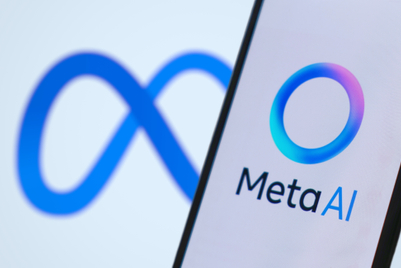.png&h=570&w=855&q=100&v=20250320&c=1)
A seemingly heartwarming Google ad meant to showcase the power of its Gemini AI tool during the Olympics has been pulled from airwaves after sparking widespread criticism.
Titled ‘Dear Sydney,’ the ad depicts a father using Gemini to help his young daughter compose a fan letter to Olympic athlete Sydney McLaughlin-Levrone. The father, in a voiceover, asks Gemini to "help my daughter write a letter telling Sydney how inspiring she is and be sure to mention that my daughter plans on breaking her world record one day. (She says sorry, not sorry.)”
While intended to be a feel-good moment to highlight AI assistance, the ad instead ignited a firestorm of criticism, with many viewers interpreting it as promoting the replacement of genuine human sentiment and effort with artificial intelligence, particularly in the context of a child's admiration.
“My little girl wants to tell Sydney McLaughlin how much she means to her. ‘Hey googleAI, write a letter to Sydney telling her how inspiring she is.” I cannot think of a less inspiring ad. What is even the point of sending that letter.
— Caitlin is tired✨(Caitlin’s Version) (@chikkadee) July 27, 2024
NPR pop culture podcast host Linda Holmes wrote on Bluesky, "Sit down with your kid and write the letter with them! I'm just so grossed out by the entire thing." She continued, "Obviously there are special circumstances and people who need help, but as a general ‘look how cool, she didn’t even have to write anything herself!’ story, it SUCKS. Who wants an AI-written fan letter??”
The ad is still available on YouTube (see below) but taken off airwaves where it was repeatedly telecast in the opening week of the Games.
"The perception that AI threatens human creativity will not simply disappear," says Carbo Yu, regional executive director at Sinclair. "In building brand reputation, understanding emotions and cultures, which only humans can fully grasp (for now), remains vital."
Google initially defended the ad, saying that it sees its LLM Gemini as a “starting point” for fresh ideas. In a statement issued to the media, the company said, “While the ad tested well before airing, given the feedback, we have decided to phase the ad out of our Olympics rotation. We believe that AI can be a great tool for enhancing human creativity but can never replace it.”
This incident is not isolated. It follows similar public backlashes against AI-driven campaigns from Apple and Toys "R" Us, revealing a growing apprehension surrounding the role of AI in creative work.
"We've now seen three high-profile AI ads backfire in short succession. What does this tell us about the current public perception of AI, particularly in the context of creativity and marcomms?" asks Martin Roll, author and brand strategist.

While Google's intention with ‘Dear Sydney’ was to promote Gemini's features, it struck a nerve with viewers who saw it as promoting automation over authenticity, particularly when it comes to children.
"The fear and the furore against recent high-profile AI ads underscore a significant global public scepticism toward AI's role in creativity and marketing communications," explains Roll. "Obviously, a primary concern is the potential elimination of jobs and future outlooks for people employed across the creative industries. So, in the short term, people are resistant to AI adoption.”
Adding to this anxiety is the perception that AI-generated content, while technically impressive, often lacks the depth, nuance, and authenticity of human creation.
"The quality and effectiveness of AI-generated ads have sometimes fallen short of expectations," Roll points out. "Despite significant advancements, AI still struggles to match the nuance and cultural awareness that human creators bring, reinforcing the perception that AI isn't yet ready to fully take over creative roles."

Apple's attempt to highlight the sleek design and processing power of its latest iPad Pro backfired spectacularly with an ad featuring a hydraulic press crushing a collection of art objects—including a piano, a sculpture, and paint cans—to make way for the slim tablet. What was intended to be a powerful visual metaphor for the iPad's capabilities was instead perceived as a tone-deaf and even hostile message, suggesting that technology trumps art and creativity.
"First and foremost, the most important issue is the underlying fear of job safety, humanity and the future," states Roll. "Apple’s ad played on this to the fullest. The C-suite misread the room, they should have known better. I am often surprised that global marketing executives aren’t more in tune with times, people's sentiments and global agendas."
Toys "R" Us, aiming for a nostalgic revival, partnered with creative agency Native Foreign to produce a video using OpenAI's text-to-video tool, Sora. The ad recreated the brand's origin story with AI-generated visuals. However, it also sparked anxieties about AI's potential to displace human creativity and threaten the livelihoods of those working in creative industries.
Walking the tightrope
Daniel Fitzpatrick, co-founder of Via Communications, acknowledges the delicate balance the industry must strike as it taps on AI's potential. "As an industry, we have an opportunity to deploy AI technologies to further push the boundaries on creativity. This is a truly exciting opportunity," says Fitzpatrick, "but we all have a role to do it with sensitivity and nuance because, right now, there is a sense that lives and livelihoods are being adversely affected by its introduction."
These recent brand missteps are a stark reminder that AI's integration into the creative landscape is a high-wire act, demanding both ambition and accountability. While the evolution of the tech has happened at breakneck speed, its role in society is still being defined.
As Martin Roll aptly observes, "Creative industries can play a constructive and leadership role in the framing of AI as an enabler of creativity. For brands, this means adopting a balanced, transparent, and ethical approach to AI—one that prioritises human creativity while harnessing the power of this transformative technology.”


.jpg&h=334&w=500&q=100&v=20250320&c=1)



.png&h=334&w=500&q=100&v=20250320&c=1)
.png&h=334&w=500&q=100&v=20250320&c=1)

.png&h=334&w=500&q=100&v=20250320&c=1)

.png&h=334&w=500&q=100&v=20250320&c=1)
.jpg&h=268&w=401&q=100&v=20250320&c=1)


.png&h=268&w=401&q=100&v=20250320&c=1)



